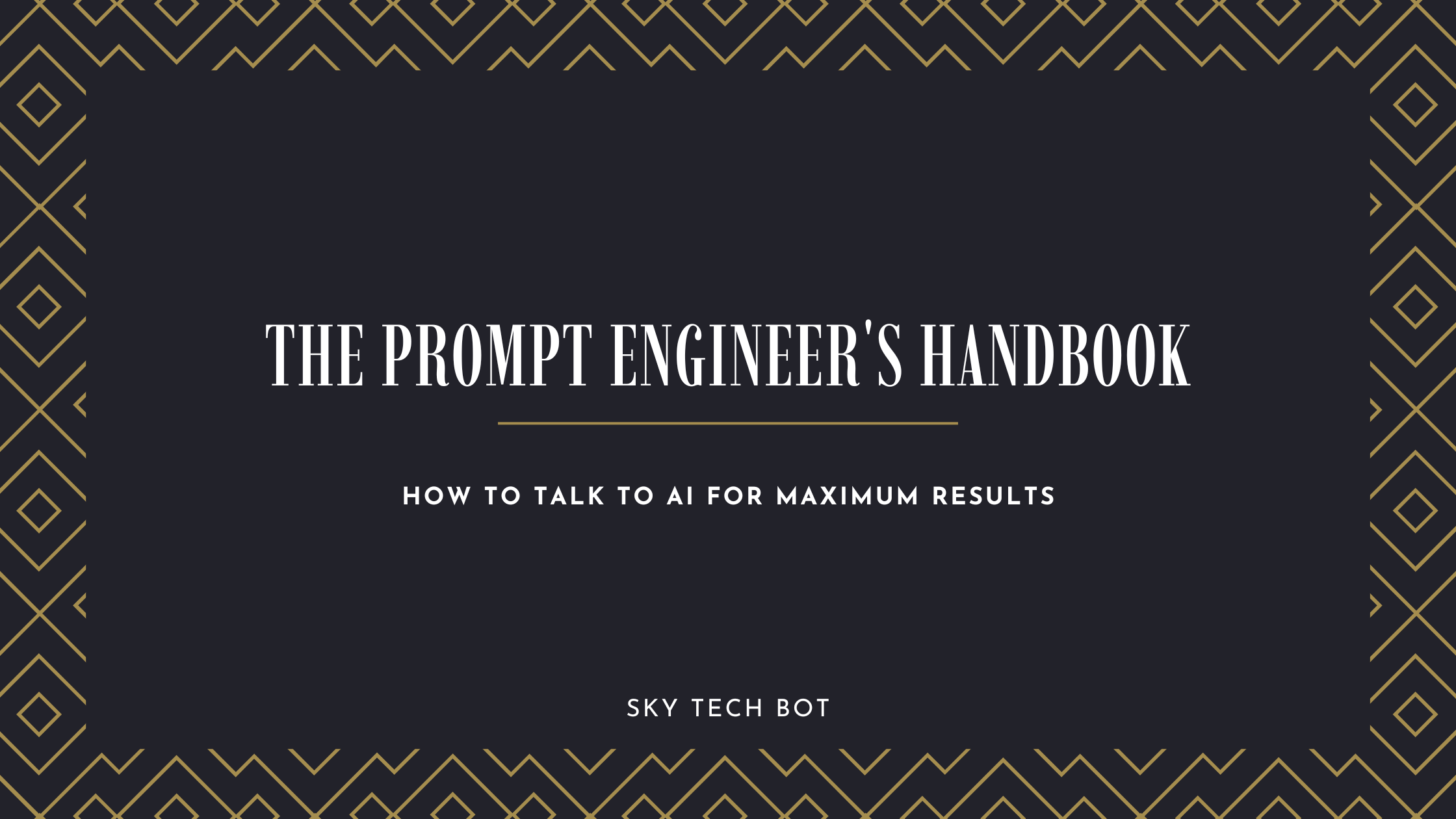Have you ever asked an AI a question and gotten a generic, useless response? The problem isn’t the AI—it’s how you’re talking to it. The secret to unlocking AI’s true potential lies in prompt engineering: the art and science of crafting instructions that get you exactly what you want.
Think of AI as the world’s most capable intern. If you say “Make me coffee,” you might get anything from espresso to cold brew. But if you say “Make me a 12-oz latte with oat milk and one sugar, served in my blue mug,” you get precisely what you envisioned.
This handbook will transform you from someone who experiments with AI to someone who commands it.
The Foundation: The CLEAR Framework
Use this simple acronym to craft powerful prompts every time:
- C – Concise: Be specific and to the point
- L – Logical: Structure your request in a clear sequence
- E – Explicit: State exactly what you want
- A – Adaptive: Specify format, tone, and audience
- R – Reflective: Include examples of what you want (and don’t want)
5 Prompt Formulas That Work Every Time
1. The Role-Play Prompt
Formula: “Act as [ROLE]. Your task is to [TASK]. The audience is [AUDIENCE]. [ADDITIONAL CONTEXT]”
Weak Prompt: “Write about cybersecurity”
Powerful Prompt: “Act as a senior cybersecurity analyst. Your task is to explain the top 3 phishing threats to small business owners who are not technical. Use simple analogies and focus on practical prevention steps.”
2. The Step-by-Step Prompt
Formula: “Break down [COMPLEX TASK] into [NUMBER] steps. For each step, include [DETAILS NEEDED].”
Weak Prompt: “How do I start a business?”
Powerful Prompt: “Break down starting an e-commerce store selling handmade candles into 7 steps. For each step, include estimated time, required resources, and common pitfalls to avoid.”
3. The Comparison Prompt
Formula: “Compare [OPTION A] and [OPTION B] in terms of [CRITERIA]. Present the results in a table and conclude with a recommendation for [SPECIFIC USE CASE].”
Weak Prompt: “What’s better, React or Vue?”
Powerful Prompt: “Compare React.js and Vue.js in terms of learning curve, performance, job market demand, and scalability. Present in a comparison table and recommend which is better for a startup building their first MVP with a small team.”
4. The Creative Constraints Prompt
Formula: “Create [CONTENT TYPE] about [TOPIC] that [SPECIFIC CONSTRAINTS]. Avoid [UNWANTED ELEMENTS].”
Weak Prompt: “Write a social media post”
Powerful Prompt: “Create 3 LinkedIn carousel post ideas about sustainable fashion that target millennials, include surprising statistics, and end with a question to drive engagement. Avoid using technical jargon and focus on emotional appeal.”
5. The Iterative Refinement Prompt
Formula: “Here is my current version: [PASTE TEXT]. Improve it by [SPECIFIC IMPROVEMENTS]. Maintain the [ORIGINAL QUALITIES TO KEEP].”
Weak Prompt: “Make this better”
Powerful Prompt: “Here is my current email to potential clients: [PASTE TEXT]. Improve it by making the value proposition clearer, shortening the length by 30%, and adding a stronger call-to-action. Maintain the professional but friendly tone.”
Pro Tips for Advanced Results
- Set the Stage: Start complex prompts with “You are an expert in [FIELD] with 15 years of experience…”
- Provide Examples: Show the AI what you want by including “Examples of what I’m looking for: [EXAMPLES]”
- Negative Instructions: Tell the AI what to avoid: “Do not use marketing jargon or make exaggerated claims”
- Chain of Thought: Ask the AI to “Think step by step” or “Show your reasoning” for complex problems
- Temperature Control: Some AIs let you set creativity levels (0 for factual, 1 for creative)
Common Prompting Mistakes to Avoid
- Vagueness: “Write something good” → “Write a 500-word blog post introduction about remote work productivity for managers”
- Overcomplicating: One clear instruction beats ten confusing ones
- Assuming Context: The AI doesn’t know your business unless you tell it
- Giving Up Too Soon: Treat AI conversation as a dialogue—refine and clarify
Your Quick-Check Prompt Checklist
- Is my role/task clearly defined?
- Have I specified the format and length?
- Did I include the target audience?
- Have I provided relevant examples or context?
- Are my “don’ts” clearly stated?
- Does the prompt leave room for ambiguity?
Remember: Great prompt engineering isn’t about memorizing commands—it’s about clear communication. The better you can articulate what you want, the more magical the results will be.
Want to master AI? Start with the fundamentals. Prompt engineering is just the beginning. In our AI & ChatBot Development Course, you’ll dive deep into building, training, and deploying intelligent AI systems. Enroll in Our AI & ChatBot Development Course and transform from AI user to AI creator.


